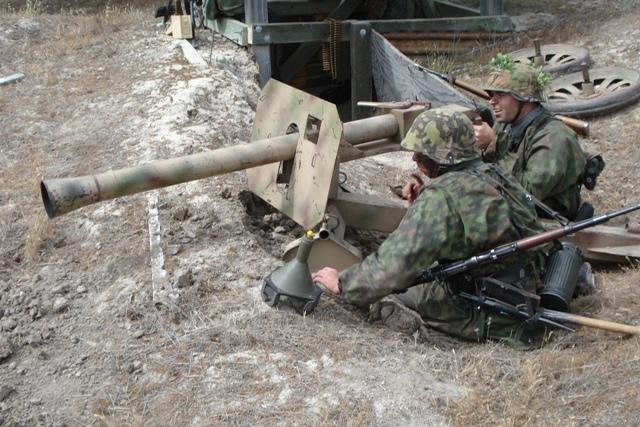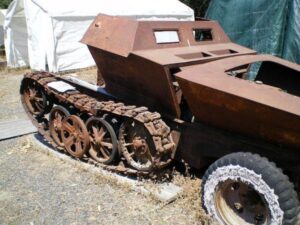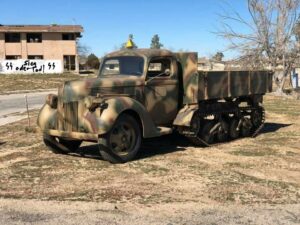Our vehicles
Sdkfz 251/1 ausf. d
This vehicle was converted from a Czech OT 810 halftrack made by Tatra in the late 40’s.The armor was totally cut away and replaced with new steel from the cab rearward. The fenders and exhaust were re-done and finishing details were added. The vehicle has MG mounts and shield, working storage boxes, and an original towing hitch.
The unit currently owns two 251/1’s
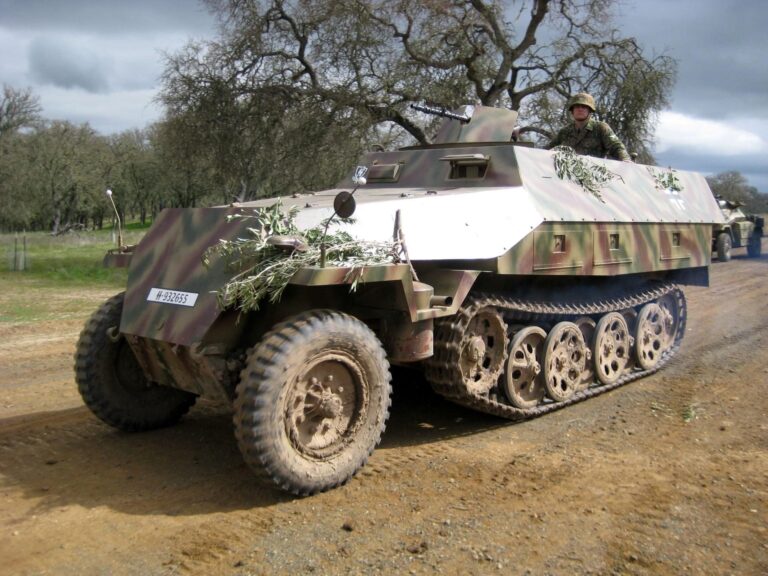
Sdkfz 251/17 audf. d "schwebelafette"
This vehicle was converted from a Czech OT 810 halftrack made by Tatra in the late 40’s.The armor was totally cut away and replaced with new steel from the cab rearward. The fenders and exhaust were re-done and finishing details were added. The vehicle has MG mounts and shield, working storage boxes, and an original towing hitch
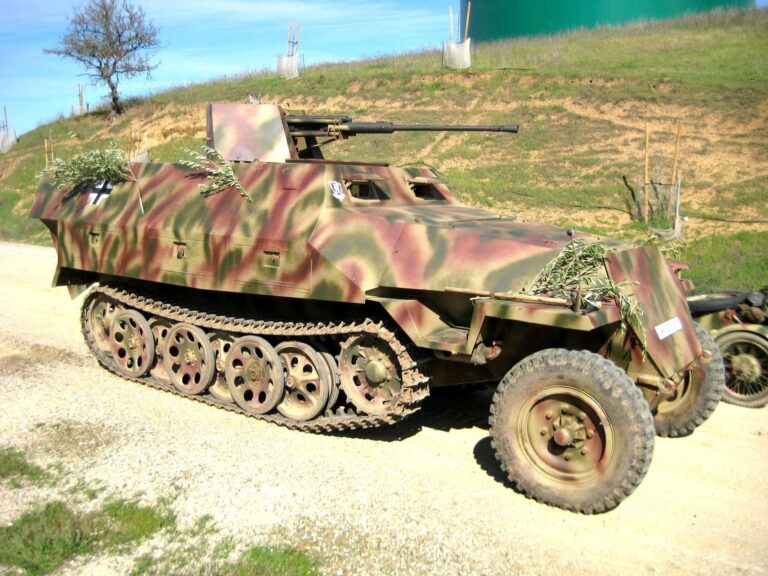
sdkfz 251/9 ausf. d "stummel"
This vehicle was converted from a Czech OT 810 halftrack made by Tatra in the late 40’s.The armor was totally cut away and replaced with new steel from the cab rearward. The fenders and exhaust were re-done and finishing details were added. The vehicle has MG mounts and shield, working storage boxes, and an original towing hitch.
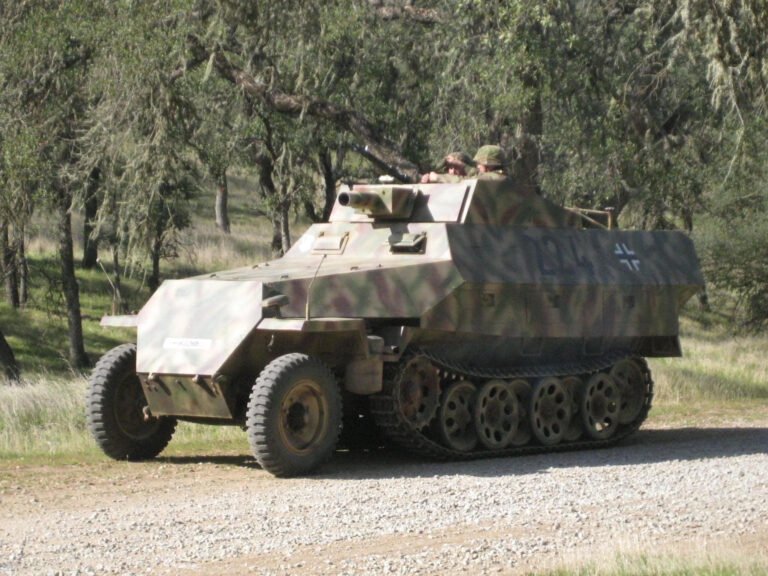
jagdpanzer 38(t)
In March 1943, Col. Gen. Heinz Guderian demanded a light tank destroyer to replace all existing “interim solutions” (e.g. Marders ) and towed anti-tank artillery (e.g. 75mm PaK 40 guns). The result of this was the Panzerjäger program or G-13. The new vehicle resulting from it was to equip tank destroyer units of infantry divisions. The Panzerkampfwagen 38(t) chassis was chosen as a base for this new Panzerjäger. It was first known as “Leichtes Sturmgeschutz 38(t)”, then “Jagdpanzer 38(t) für 7.5cm Pak 39 L/48″, and finally “Jagdpanzer 38 Hetzer”. It appears that the name Hetzer was not an official name but used by troops and then used in post-war publications. On December 17, 1943, designs were ready and, on January 24, 1944, a wooden mock-up was finished. In March 1944, the first three proto-types were produced by BMM (Boehmish-Mährische Maschinenfabrik) and it was decided to start production. From March to April of 1944, prototypes were extensively tested, while preparations for production were made at BMM (Praga/CKD-Ceskomoravska Kolben Danek) in Prague and then at Skoda Works at Pilsen.
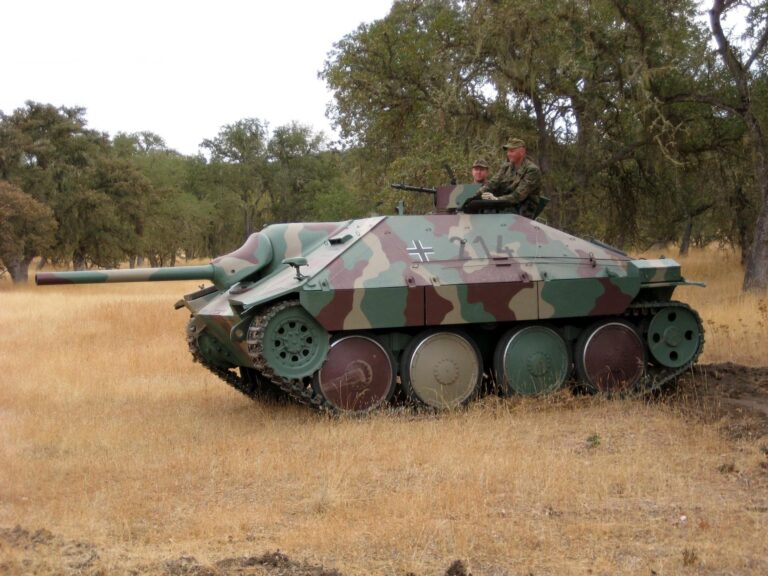
1936 and 1941 3 ton lkw
The Volkswagen Kübelwagen (literally translated as “bucket car”, for its resemblance to a metal bathtub on wheels) was a light military vehicle designed by Ferdinand Porsche and built by Volkswagen during World War II for use by the German military (both Wehrmacht and Waffen-SS). Based heavily on the Volkswagen Beetle, it was prototyped as the Type 62, but eventually became known internally as the Type 82.
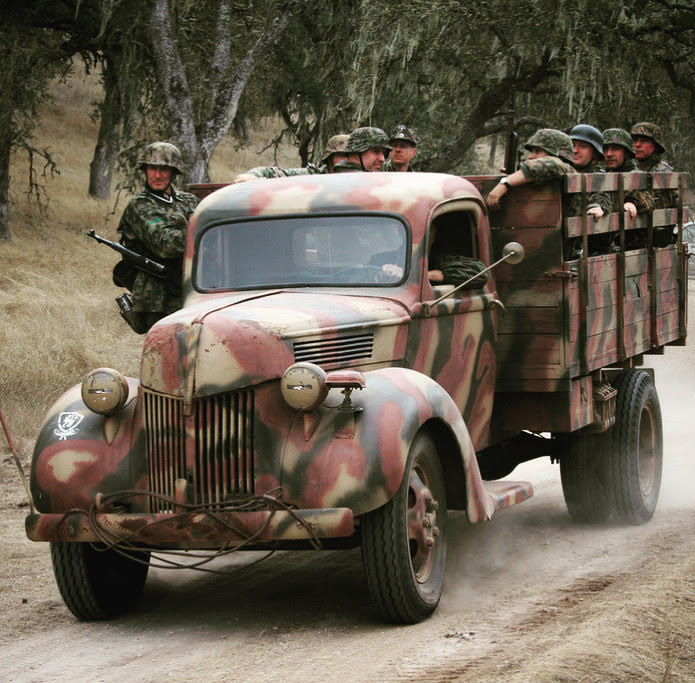
1943-1944 vw kubelwagen
The Volkswagen Kübelwagen (literally translated as “bucket car”, for its resemblance to a metal bathtub on wheels) was a light military vehicle designed by Ferdinand Porsche and built by Volkswagen during World War II for use by the German military (both Wehrmacht and Waffen-SS). Based heavily on the Volkswagen Beetle, it was prototyped as the Type 62, but eventually became known internally as the Type 82.
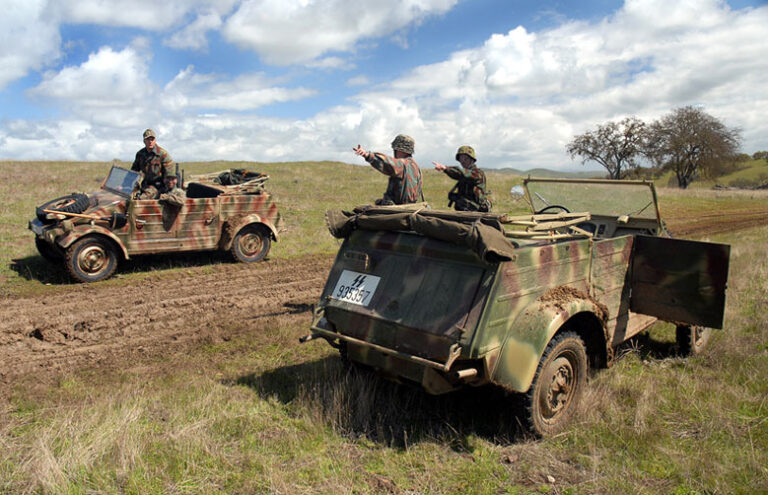
ford g 917 t / g 997 t
The Volkswagen Kübelwagen (literally translated as “bucket car”, for its resemblance to a metal bathtub on wheels) was a light military vehicle designed by Ferdinand Porsche and built by Volkswagen during World War II for use by the German military (both Wehrmacht and Waffen-SS). Based heavily on the Volkswagen Beetle, it was prototyped as the Type 62, but eventually became known internally as the Type 82.
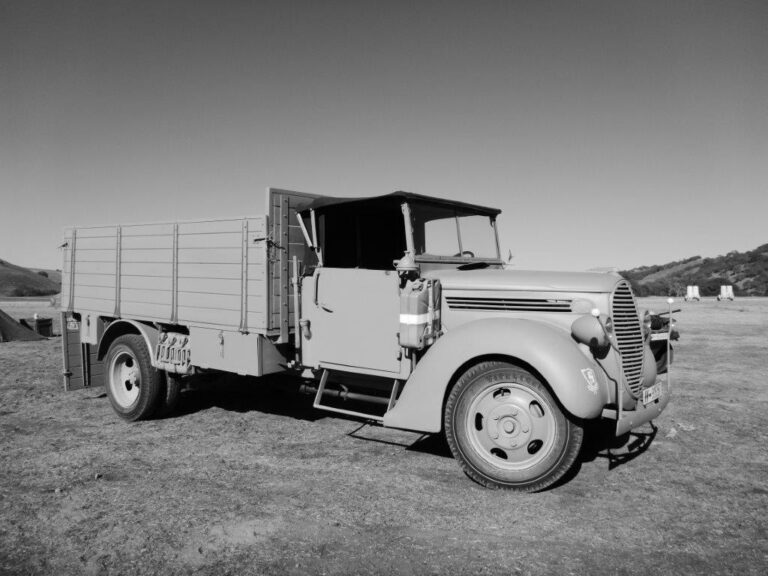
5. kompanie motorcycles
BMW produced the highly reliable, capable and maneuverable R-71 beginning in 1938. It was a mainstay of the German motorcycle troops. The motoharradtruppen were the mainstay to the recon force, the types of troops being utilized by Kurt Meyer in Belgium and the Russland. The unit Currently has 3
In the 1930s BMW were producing a number of popular and highly effective motorcycles. In 1938 development of the R75 started in response to a request from the German Army.
Preproduction models of the R75 were powered by a 750 cc side valve engine, which was based on the R71 engine. However it was quickly found necessary to design an all new OHV 750 cc engine for the R75 unit. This OHV engine later proved to be the basis for subsequent post-war twin BMW engines like the R51/3, R67 and R68.
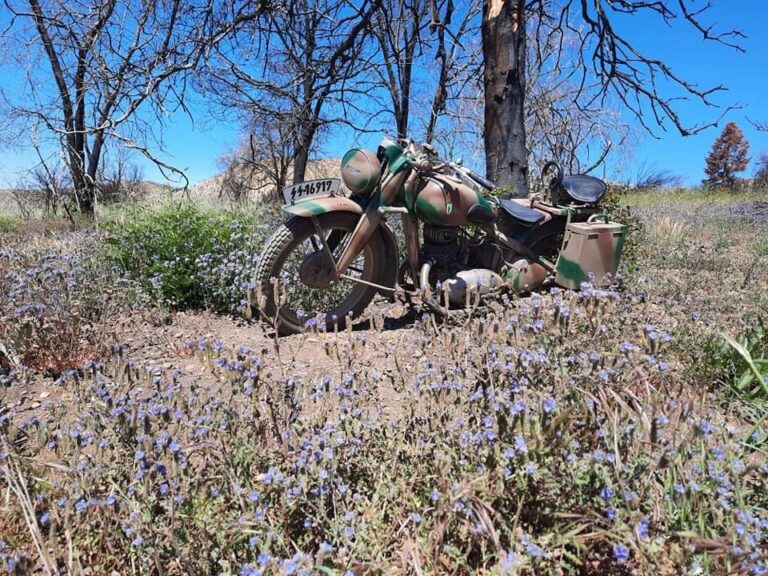
stoewer r200
In 1936 Stoewer factory developed the light off-road car (le.E.Pkw, leichter geländegängiger Einheits-PKW) for the Wehrmacht, a versatile four-wheel drive car, initially equipped (to 1940) with four-wheel steering. Due to capacity-problems the cars had also been produced at BMW-Factory Eisenach as BMW 325 and by Hanomag in Hanover as Type 20 B. Together the three manufacturers made a total of ca. 13.000 units.
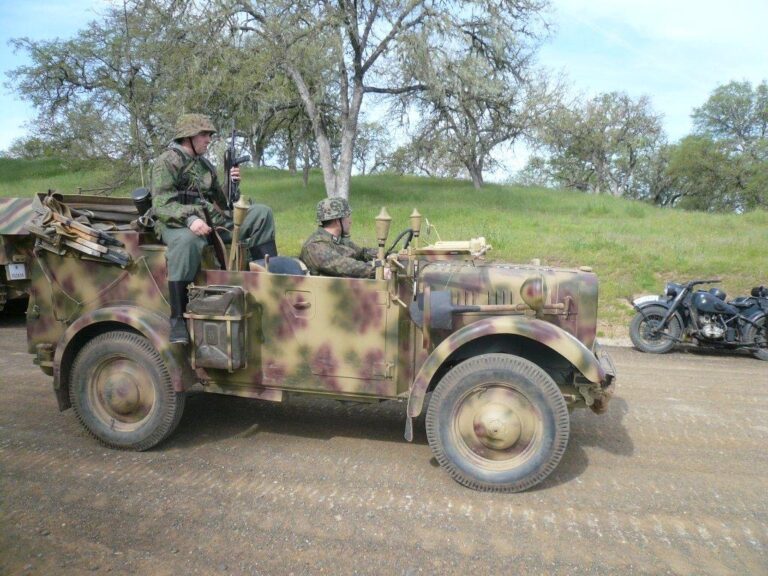
1944 schwimwagen
The VW Type 128 and 166 Schwimmwagen (literally Floating / Swimming Car) were amphibious four-wheel drive off-roaders, used extensively by the German Wehrmacht and the Waffen-SS during the Second World War. The Type 166 is the most numerous mass-produced amphibious car in history
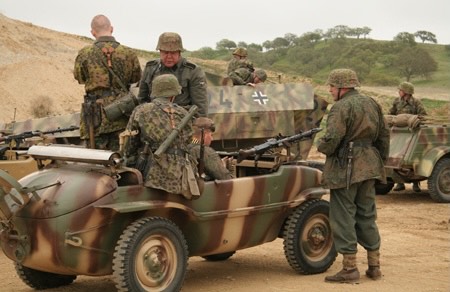
our crew served weapons
2cm flak38
The Flak 30 (Flugabwehrkanone 30) and improved Flak 38 were 20 mm anti-aircraft guns used by various German forces throughout World War II.
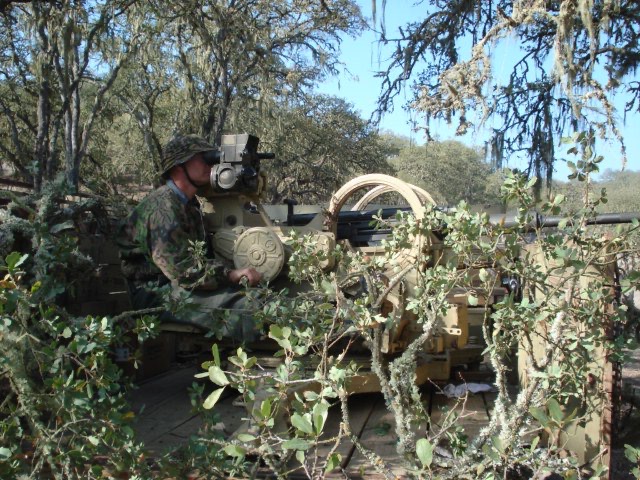
8cm granatwerfer 34 (8cm Grw 34)
The 8 cm Granatwerfer 34 (8 cm GrW 34) was the standard German heavy mortar throughout World War II. It gained a reputation for extreme accuracy and rapid rate of fire, although much of the credit should go to the training of the crews.
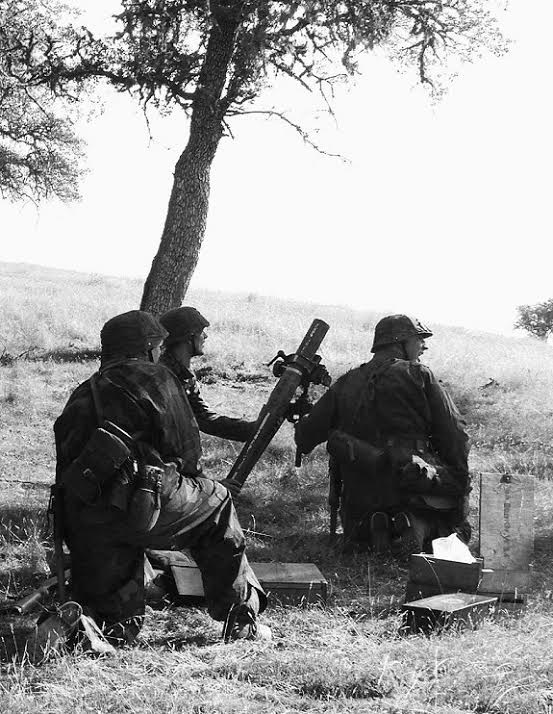
7.5cm infanteriegeschutz 37 (7.5 cm IG 37)
The 7.5 cm Infanteriegeschütz 37 (7.5 cm IG 37) was an infantry support gun, used by Germany, during World War II. The guns were originally designated 7.5 cm PaK 37. The IG 37s were manufactured, beginning in late 1944, from carriages of 3.7 cm PaK 35/36s (and the nearly identical Soviet 3.7 cm PaK 158(r)) and a barrel designed originally for the IG 42 infantry support gun. As an anti-tank weapon it used a hollow charge shell with 0.5 kg of explosives to penetrate up to 85 mm with a v0 of 395 m/s. The first 84 guns were delivered in June 1944.
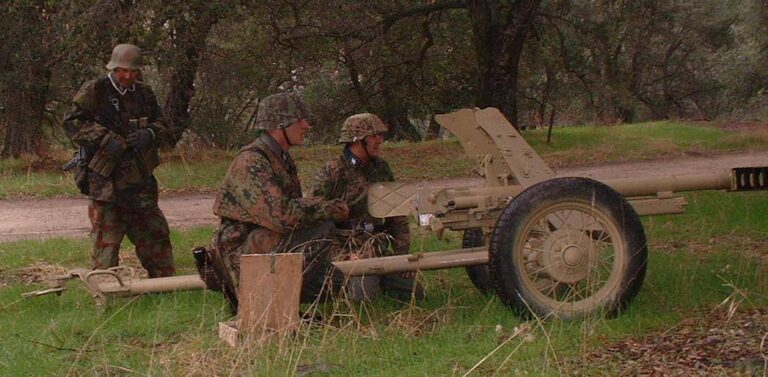
8.8cm raketenwerfer 43 "puppchen"
It was given to infantry to bolster their anti-tank capability. The weapon was fired from a small two-wheeled gun carriage which fired a rocket-propelled, fin-stabilized grenade with a shaped charge warhead, similar to the grenade of the Panzerschreck but not the same. Approximately 3,000 units were completed from 1943 to 1945.
